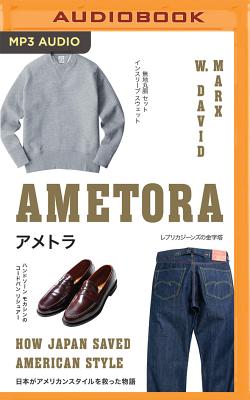Ametora: How Japan Saved American Style (MP3 CD)

Staff Reviews
Mitsu the Magazine Man called this book his bible and I understand why. Japan’s obsession with American fashion started and spread through publications and magazines such as POPEYE. Even the formatting of these magazines are inspired by American catalogues, yet it is perfectly infused with Japanese traditional values and attention to detail. As a half Japanese half American person, it was so interesting to learn how both of my cultural identities are married through fashion, constantly pulling inspiration from each other.
— SaayaDescription
Look closely at any typically "American" article of clothing these days, and you may be surprised to see a Japanese label inside. From high-end denim to oxford button-downs, Japanese designers have taken the classic American look - known as ametora, or "American traditional" - and turned it into a huge business for companies like Uniqlo, Kamakura Shirts, Evisu, and Kapital.
This phenomenon is part of a long dialogue between Japanese and American fashion; in fact many of the basic items and traditions of the modern American wardrobe are alive and well today thanks to the stewardship of Japanese consumers and fashion cognoscenti, who ritualized and preserved these American styles during periods when they were out of vogue in their native land.
In Ametora, cultural historian W. David Marx traces the Japanese assimilation of American fashion over the past 150 years, showing how Japanese trendsetters and entrepreneurs mimicked, adapted, imported, and ultimately perfected American style, dramatically reshaping not only Japan's culture but also our own in the process.

